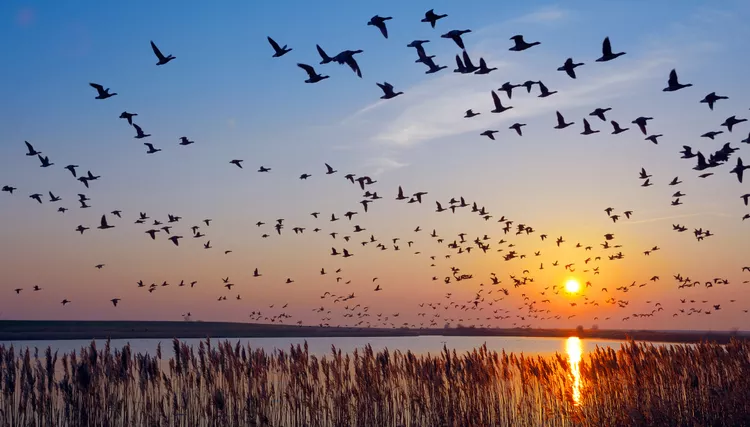### Celebrating World Bird Migration Day: A Journey Across the Skies
#### Introduction
Every year, millions of birds embark on incredible journeys across continents, navigating vast distances with an innate precision that continues to baffle scientists and bird enthusiasts alike. To honor these extraordinary feats of nature, World Bird Migration Day (WBMD) is celebrated globally, bringing attention to the marvels of avian migration and the urgent need for their conservation. This blog delves into the significance of WBMD, the fascinating science of bird migration, and what you can do to join in the celebration.
#### The Significance of World Bird Migration Day
World Bird Migration Day, observed twice a year in May and October, is a global campaign organized by Environment for the Americas (EFTA), the Convention on Migratory Species (CMS), and the Agreement on the Conservation of African-Eurasian Migratory Waterbirds (AEWA). This bi-annual event aims to raise awareness about the challenges migratory birds face, from habitat loss and climate change to illegal hunting and pollution. By celebrating WBMD, we not only acknowledge the incredible journeys these birds undertake but also reinforce our commitment to protecting their habitats and ensuring their survival.
#### The Marvels of Bird Migration
Bird migration is one of the most spectacular and enigmatic phenomena in the natural world. Birds migrate for various reasons, primarily to exploit seasonal food resources, breed, and escape harsh weather conditions. Here are some astonishing facts about bird migration:
1. **Incredible Distances**: The Arctic Tern holds the record for the longest migration, traveling up to 40,000 kilometers annually from the Arctic to the Antarctic and back.
2. **Navigational Genius**: Birds use a combination of the sun, stars, Earth's magnetic field, and landmarks to navigate. Some species, like the homing pigeon, possess an extraordinary ability to find their way back home over great distances.
3. **Endurance and Adaptation**: Migratory birds exhibit remarkable endurance, with some species flying non-stop for days. The Bar-tailed Godwit, for example, can fly up to 12,000 kilometers without stopping.
4. **Synchronicity and Timing**: Migration is often a synchronized event, with flocks traveling together to increase their chances of survival. The timing of migration is crucial and is typically influenced by changes in daylight, temperature, and food availability.
#### Challenges Faced by Migratory Birds
Despite their incredible abilities, migratory birds face numerous threats:
1. **Habitat Loss**: Urbanization, deforestation, and agricultural expansion have led to the loss of critical stopover sites and breeding grounds.
2. **Climate Change**: Altered weather patterns affect the availability of food and suitable habitats, disrupting migration schedules.
3. **Pollution**: Pesticides, plastic waste, and oil spills pose significant threats to migratory birds.
4. **Hunting and Trapping**: In some regions, migratory birds are hunted or trapped for sport, food, or the pet trade.
#### How You Can Celebrate and Contribute
World Bird Migration Day is an excellent opportunity to engage with the natural world and contribute to bird conservation. Here are some ways you can participate:
1. **Bird Watching**: Join a local bird-watching event or organize one in your community. It's a great way to connect with nature and learn more about migratory birds.
2. **Educational Activities**: Participate in or host educational workshops, webinars, and talks to spread awareness about the importance of migratory birds and their conservation.
3. **Support Conservation Efforts**: Donate to or volunteer with organizations dedicated to bird conservation, such as the Audubon Society, BirdLife International, and local wildlife groups.
4. **Create Bird-Friendly Habitats**: Plant native trees and shrubs in your garden or community spaces to provide food and shelter for migratory birds. Installing bird feeders and bird baths can also help.
5. **Advocate for Policies**: Support and advocate for policies that protect migratory birds and their habitats at local, national, and international levels.
#### Conclusion
World Bird Migration Day is more than just a celebration; it is a call to action to protect the wondrous journeys of migratory birds. By understanding their incredible migrations, recognizing the challenges they face, and taking steps to mitigate these threats, we can ensure that these avian travelers continue to grace our skies for generations to come. So, this WBMD, let’s take a moment to look up, appreciate the birds soaring above, and commit to safeguarding their future.
---
Feel free to share your thoughts or experiences related to bird migration in the comments below. Happy birding!

